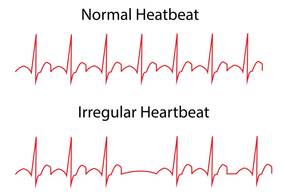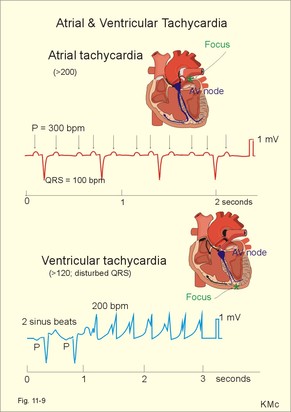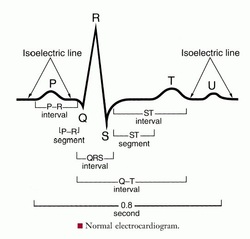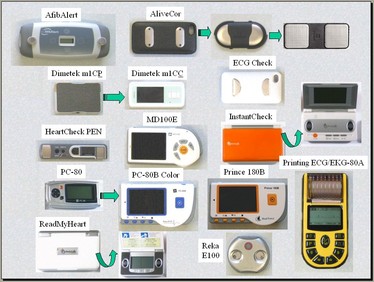
Premature beats are the most common type of arrhythmia and usually feel like fluttering in the chest or a feeling of a skipped heartbeat, because of stress, too much exercise, too much caffeine or nicotine.



AfibAlert heart monitor was specifically designed for Atrial Fibrillation (AFib, a quivering or irregular heartbeat, a type of arrhythmia). It is used as an alternative option that captures high quality ECGs and is far less intrusive on patients' daily activities. Requires prescription.
ECG check is a heart monitor that attaches to the back of a smartphone, like a protective case, to record, store, transfer, and analyze single-channel electrocardiograms (ECG) wirelessly.
The HeartCheck Handheld™ EKG device was developed by CardioComm Solutions, Inc. The ECG PEN™ can be used in arrhythmia screening/monitoring and stroke and sudden death prevention efforts. The FDA clearance also recognizes and includes CardioComm Solutions' GEMS™ (Global ECG Management System) Home software, which in this version, enables the actual ECG recording to be viewed on a personal computer.
Kardia is a clinically-proven personal EKG solution that allows patients to capture medical-grade single-lead EKGs instantly, via a high-end tablet, smartphone or Apple Watch. It is cleared by FDA.
ChoiceMMed ECG products, ReadMyHeart, Dimitek DiCare-m1CC, and PC-80B Color are examples of stand-alone handheld monitors that don't require mobile phones to operate.
Many more diagnostic hand-held devices or wearables are in the development including a disposable HealthPatch® MD that claims to detect Single-Lead ECG, Heart Rate, RR Interval, Heart Rate Variability, Respiratory Rate, Skin Temperature, Body Posture, Fall Detection and activity including steps.
Treatment of Arrhythmia may include: • Lifestyle changes • Medicine to prevent and control arrhythmias • Medicine to treat related conditions such as high blood pressure, coronary artery disease and heart failure • Anticoagulants to reduce the risk of blood clots and stroke • A pacemaker to help the heart beat more regularly.
